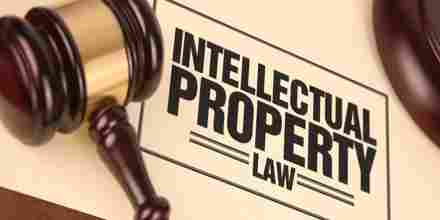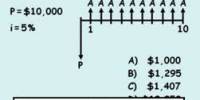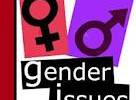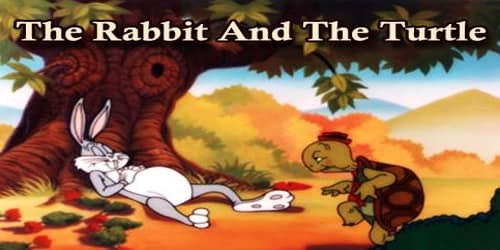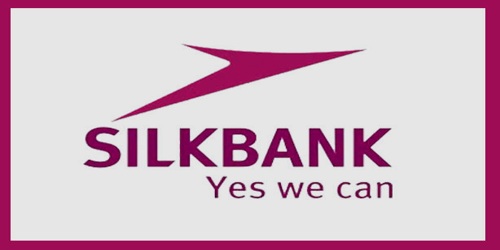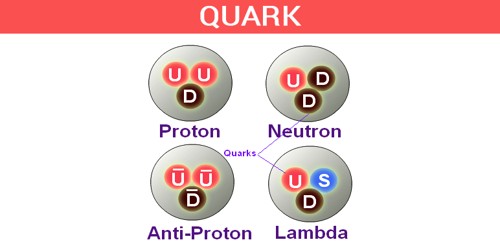Subject of Term Paper: Intellectual Property in Bangladesh
We have worked on Intellectual Property in Bangladesh & we have come to know that Intellectual Property is a process of agreement for the parties to resolve disputes. We have tried our level best within a timetable to know the perceptions, laws, types and thus the procedure of Intellectual Property in Bangladesh.
All justifiable matters can take place in Intellectual Property within some exception to the rules of Intellectual Property. However, it is not actually permissible to make an appeal of religious observance & state of marriage to answer in Intellectual Property. The proceeding of Intellectual Property must be conduct as to afford the parties a fair hearing based on equality. The arbitrator generally has the authority to request the parties and third persons to produce documents and books and to enforce such a request by issuing subpoenas through court Overall, we can say that it is a well-designed law. However, some changes need to be reform to copy the changing world and face the changing situation of the world. In terms of copyright act we have found that, Bangladesh has a distinct law on it.
Literature Review
This report is about Intellectual Property Law in Bangladesh. To make this report we gathered so many information and data. Most of the information is collect from the web. We also take information from some well-known reports, books, and journals. Taking information from Wikipedia is totally prohibited in this term.
The information’s are combined in point by point rather than making chapters and the statistics of the report is given in the last page.
(1) Intellectual Property
Over the year the creators are practicing their creative mind, in every sector like Culture, Business and most important by in science sector. However, some bad dog are always over there who terminate those creativity and because of them, the creator do not get the proper utilization from their creation.
To get of this kind of sate the creator and give them the proper feedback of their work. Intellectual Property is a watchdog. Like other country, Bangladesh has also a law regarding to intellectual property. [1]There are copy right (Amendment) 2005, Patent and Design act, 1911, patent and design rules 1933, trade act 1940, trademark rules 1963.
The Government of Bangladesh is working with this to give support the intellectual activities. Anyone of the country can easily apply for patent or his/her trademark book and writings music’s for copy right to safeguard their business good will and their intellectual property. Once anyone got registration of his or her patent, trademark or copyright from the legal authority of his/her, get the full legal right of the creator.
The enforcement of intellectual property law in Bangladesh is strongly follow by the government of Bangladesh but in certain time copyright law was not that much active and because of this many creator of music, art and film were harm. However, by the lapse of time government takes step to the prevention of the violation of copyright.
As the world situation is changing every day, the law should modified with the changing world to give the safety of inventor and making risk free environment to invent new invention.
Department of Patents, Designs and Trademarks was established by unification of the previous Patent Office and the Trademarks Registry Office under the Ministry of Industries.
(2) An Overview of Intellectual Property Law
To the perspective of Bangladesh law and act Intellectual Property (IP) law is not a new idea but the implement and the activities of those law are not that much active in compare with the new world’s IP law. However, our research on IP in Bangladesh we found that some act strongly active but some laws are not exists like Confidential Information and Layout -designs of integrated circuits. Therefore, our government should add new laws to facing the new problems on Intellectual Property (IP) in the changing condition of Bangladesh and the new world.
The concepts of trade secrets and unfair competition have also been developing. In the TRIPS Agreement, the following rights are treating as part of intellectual property:
(a) Patent
(b) Copyright
(c) Trademark
(d) Industrial Design
(e) Confidential Information
(f) Layout -designs of integrated circuits
Patent Law
Introduction of Patent of Law
Patent Law protects a technical invention for a limited period. It gives the owner the right to prevent others from exploiting the invention in the countries for which it has been granting. The word ‘patent’ is come from the Letters Patent which would be issue by the sovereign and which could be present by recipients as evidence of the extent of the rights conferred upon them. A Flemish weaver who wanted to practice his trade in England was granted a patent in 1331, it was one of the earliest recorded of patent. Some letters patent were grant for inventions – for example, John of Utyman granted a patent in 1449 for his new method. His new method is making stained glass. The method was like; one person had made some novel invention and wanted to stop other from simply copying it. A monopoly system developed in the reign of Elizabeth I and many letter patents were grant.
Patent Law in Bangladesh
The law of patent in Bangladesh is found in the Patents and Designs Act, 1911 (“the PDA”) and the Patent and Design Rules, 1933. The PDA codified the common law relating to patent prevailing at that time.
(a) The subject matter of a patent should be a manner of new manufacture; in the law of the Patent and Designs act, 1911 In Bangladesh. There is no bar for define the law of “The subject matter of a patent should be a manner of new manufacture”. However, we can discuss this law by taking help from the other law. In Clause (8) of section 2 of the act defines ‘invention’ as any manner of new manufacture and the term include an improvement. In Clause (10) in same section we can find that the term ‘section’ provide the term of ‘manufacture’. Both of those Clauses are represent the meaning of the law.
(b) The inventor or his legal representative or his assignee should be a party to the application for a patent; The application for the patent can be made by one person or made by jointly with another person. It must be making in the prescribed form. It also must be add at the office of patent in the prescribed manner.
(c) The application for a patent may be making along with either a Provisional Specification or a Complete Specification; the application for a patent can be making by along with a Provisional Specification or with a Complete Specification. It means it can be with a Provisional Specification or it can be with a Complete Specification.
(d) Every application in respect of which a Complete Specification has been filed is examined before it is finally accepted; Before finally accepting the every application in respect of which a Complete Specification have to be filed and it will be examined.
(e) On the acceptance of an application, the specification or the specification in respect of it becomes open to public inspection; after accepting the application of the specification or the specification in respect, it became open to public inspection. Public inspection is a government instruction for any person.
(f) The grant of a patent on an application may be opposed by any person within 4 months from the date of the advertisement of its acceptance; If anyone want to opposed the grant of a patent he or she can do it within 4 month from when the advertisement of its acceptance occur. Any person can oppose that means from the date of the advertisement of its acceptance to 4 month.
(g) Every patent should be confined to one invention only , but the specification may contain more than one claim; Every patent can be done for only one invention only. Every patent must be different from other, but the specification can be containing in many claim.
(h) The normal term of a patent is 16 years from its date; but in special circumstances the term may be extend for a further period not exceeding 10 years; the normal term of the patent time duration is 16 years from the date of the advertisement of its acceptance. But in special chase the term of them can be changed .It can exceeding by 10 years, not more than that.
(I) The continuance of a patent other than a patent of addition is subject to payment of certain renewal fees; In every patent must be pay some fee for renewal. It is can vary patent to patent.
(j) The patentee can be compelling by the Government to grant licenses in public interest;
(k) A patent can be revoked by the Controller, the Government or the High Court, in certain circumstances. There is a controller for every patent. The government or the High Court for certain situation can cancel every patent.
Term of Patent
Patent can be has many terms. Btu in Bangladesh we have only there are mainly three terms of patent in outlaw:
(1) The term limited in every patent for the duration there of shall, save as otherwise expressly provided by this Act, be sixteen years from its date. The limit of bate of any patent can be 16 years. For every patent, the time duration is same by this Act,
(2) A patent shall, notwithstanding anything therein or in this Act, cease if the patentee fails to pay the prescribed fees within the prescribed times. Provided that where the patentee, before, or within three months after, the expiration of the time for payment, applies to the registrar for an extension of time, the patent shall, on payment of such additional fee as may be prescribed, be continued or revived, as the case may be, for any period so applied for not exceeding in all three months from the expiration of the time for payment.
(3) If any proceeding is take in respect of an infringement of the patent committed after a failure to pay any fee within the prescribed time, and before any enlargement thereof, the Court before which the proceeding is taken May, if it thinks fit, refuse to award any damages in respect of such infringement.
Restoration of lapsed patent
Sometime many patens can be lapsed by much reason. If the laps patens need to come back there previous position. They must be maintaining some rules and regulation. There is a process to come back of lapsed patent. Everyone must me go though on it.
(1) Where any patent has ceased owing to the failure of the patentee to pay any prescribed fee within the prescribed time, the patentee may apply to the Registrar in the prescribed manner for an order for the restoration of the patent.
Many patents are unable to pay there prescribed fee within the prescribed time. Therefore, they lost their patentee. They cannot continue their patent, in a chase they have to apply to the Registrar in the prescribed manner for an order for the restoration of the patent.
(2) Every such application shall contain a statement of the circumstances, which have led to the omission of the payment of the prescribed fee.
(3) If it appears from such statement that the omission was unintentional or unavoidable and that no undue delay has occurred in the making of the application, the Registrar shall advertise the application in the prescribed manner, and within such time as may be prescribed any person may give notice of opposition at the Department of Patents, Designs and Trade Marks.
If the patent come with the reasons of statement that the omission was unintentional or unavoidable and that no due delay has occurred in the making of the application, then the Registrar can advertise the application in the prescribed manner, and within such time as may be prescribe any person may give notice of opposition at the Department of patent.
(4)Where such notice is given, the Registrar shall notify the applicant thereof.
(5) After the expiration of the prescribed period the Registrar shall pay attention to the case and, subject to an appeal to the Government issue an order also restoring the patent subject to any conditions and limitations think to be sensible or dismissing the application:
Every patent has a time limit. After the prescribed period of the patent, the Registrar shall pay attention to the case of the expiration of the prescribed period of the patent. Then the person who registers the patent he or she must appeal to the Government Issue an order. Patent can be restored subject to any conditions and limitations think to be sensible or dismissing the application
If in every order under this section, restoring a patent such provisions as may be prescribed shall be insert for the protection of persons who may have availed themselves of the subject matter of the patent after the patent had ceased.
Characteristics to be Patentable
Through our reaches, we find some characteristics of the patent law. In order to be patentable an invention should have the following characteristics:
(a)The invention should relate to a manner of manufacture; Manner of manufacture implies the process or apparatus for producing, preparing, or making an article by subjecting materials to manual, mechanical, chemical, electrical or the like operations, for preserving or modifying their properties, or for producing new materials, and also any article so prepared, produced, or made.
(b)The manner of manufacture should be novel; Novelty is considered with orientation to what is publicly used in Bangladesh and to what is publicly known in Bangladesh previous to the date of patent.
(c) It should be the outcome of inventive creativity; an invention will not be a patent if it does not has the quality of “invention”, though it has manner of manufacture and novel
(d) It should have utility; without having any utility the invention will not be a patent. Utility does not mean abstract utility or comparative utility, or competitive utility or commercial utility. Utility mean having practical existence as a manner of manufacture.
(e) It should not be contrary to law or morality. Any kinds of illegal invention cannot be register as a patent
Types and Procedure for Obtaining Patent
Types of patent
An inventor of process of manufacture may have the either of the following types of patent:
- An ordinary patent (under Section 3 of the Patent Act)
- patent claiming priority of date (under Section 78A)
- A secret patent (under Section 21A)
- A patent of addition (under Section 15A of the Act)
Appling Procedure for patent
The application procedure of parent is not that easy in. There are many rules to maintain. Any one person or more than one person it is means jointly with another person may make the application for a patent. The person of the application can be a citizen of Bangladesh or not. Everyone can apply for a patent.
The application must be made in a prescribed form. The patent must be list in the Department of patent, Designs and Trade Marks in the set manner. If the patent is not list then the application cannot be granted or expectable.
The application has to hold a statement to the effect that the applicant is in possession of an invention. The parson who is registering the patent or the parsons that that are involve on the registration in both of those one at least of the applicants, claims to be the true and first inventor or the legal representative or assign of such inventor and for which he desires to obtain a patent, and must be accompanied by either a provisional or complete specification and by the prescribed fee. In the situation where the true or false are not the part of the application, then the application must a statement of his name and the applicant must show that he is the legal repetitive of such inventor.
(4) Copyright Law
Bangladesh has copyright law like many other countries of the world. Previously the law was not given as much as attention like now. The people of Bangladesh are now paying more attention than before on this law because of its utility and benefits. On July 9, Bangladesh passed new copyright legislated, called “Copyright Law 2000”. The law is propos to aid writers, artists, filmmakers, musicians, producers, publishers and computer software companies to protect their copyrights.
Copyright System in Bangladesh
Copyright activates in Bangladesh has been governed by the copy right 2000. It has also updated by taking relation with in International law.
The old law which was available in the form of an ordinance of 1962 no 34 of 1962 has been repealed and the new law which is known the copyright act 28 of 2000 has come into force since November 1, 2000.
The government of Bangladesh is now more concern about the enforcement of copyright law. Copyright protection subsists for the lifetime of the author who creates the work plus 60 years after his death. In the case of Government works, musical records, cinematographic works, films, photographs, works of international or local organizations the term is 60 years after first publication. The term of protection for broadcasting rights is 25 years; the term for the protection of the performers’ rights is 50 years.
Previously the artist filmmaker and writer was the victim of unauthorized use of their activities but now along with the government the general people also are concerned
Copyright law enforced under the Ordinance copyright protection is grant for various types of works. Section 10 of the Ordinance provides as follows:
Registration of copyright
In the Copy Right Law Act 2000 in section (10) mention that which company can be register for the Copy Right Law. The Register will be kept in seven parts as follows:-
- Part I – The company types is Literary, Computer, Software, Dramatic and Musical works.
- Part II – All kinds of the Artistic works are in this law. Artistic works can be register for this law.
- Part III- Cinematographic works can be a part of this law.
- Part IV- Every kind of Records can do registration for this law
- Part V- Broadcasts is a part of this law. All kinds of broadcasts can be a part of this law.
- Part VI- Telecasts is a also a part of this law. Every kinds of Telecasts can do register under this law.
- Part VII- All kind of E-mails, web site and other modes of communications can be register under this law.
Terms of Copyright that shall not exist
For the necessities of the law of copyright shall not exist in any work specified in sub-section (1), other than a work to which the provisions of section 53 or section 54 apply, unless –
- Copyright shall not exist if the author was dead at that date, was at the time of his death, a citizen of Bangladesh
- Copyright shall not exist of an unpublished work other than an architectural work of art, the author is at the date of the making of the work a citizen of Bangladesh or domiciled in Bangladesh;
- Copyright shall not exist of a work of architecture; the work is located in Bangladesh.
- Copyright shall not exist of a record, the recording is made in Bangladesh;
- Copyright shall not exist of a broadcast; the broadcasting is transmit from within Bangladesh.
Infringement of Copyright
The copyright law will be infringement if any one does any of these Acts. As per section 71 of the Copyright Act, 2000, copyright in a work is deemed to be infringe
When any person without a license from the owner of the copyright, or the Registrar of the copyright, or in contravention of the conditions of a license granted or any conditions imposed by a competent authority under Act:
- If anyone harm the interest of the exclusive right of the owner of the copyright
- Allow for profit any place to be used for communicate the work to the public where such communication form an infringement of the copyright in the work, unless he was not aware and had no reasonable ground for believing that such communication to the public would be an infringement of copyright.
When any person does any of the following acts, it will also consider as infringement of copyright:
- Without author’s permission if any one offer to sale or hire or sell or lets hire or display of his works will be infringing of the work
- If anyone exhibits to public for trading, it will be infringing of the work.
- Importing the copies of work without authorization in Bangladesh infringing
Essential ingredients of Infringement
Depending upon the nature of copyright work, infringement involves one or more of the following acts without the authorization of copyright owner:
- a) Reproduction of the work in any material form;
b) Publication of the work;
c) Communication of the work to the public;
d) Performance of the work in public and
e) Making of adaptations and translations of the work and doing any of the above acts in relation to a substantial part of the work.
(5) Punishment of Copyright
The law provides for maximum punishment of four years’ imprisonment and fine of TK 200,000 in cash for violation of the copyright rules.
Trademarks Law
An Introduction to Trademarks Law
A trademark is one of the most important laws of Intellectual Properties. It’s a part of this law. There are many terms in trademarks law. The Trade Marks Act, 1999 introduced for the first time machinery for the registration and statutory protection of trademarks in Bangladesh.
Trademarks are diverse and familiar feature in both industrial and commercial markets. Trademark has been use for long by the marketer and commercials to distinguish their product form others and sold it to customers. By the end of the sixteenth century it was very common for shopkeepers to erect sign illustrating their trade. Traders took to using cards bearing their name and address often accompanied by a device of some sort, an early form of business card. The industrial revolution seen enormous growth in the use of names and marks in advertising and the modern trademark was born.
Trademarks are a very valuable form of intellectual property because trademarks become associated with quality and consumer expectations in a product or service. Some goods become almost synonymous with their trade name, for example Coca-Cola, Levis jeans. Coupled with intensive campaigns, the utility of marks to their owners as marketing weapons is plain to see and trademarks usually will be vigorously defended.
Definition of trademark
According to trademark act 1999, in Section 4 it was it has Benn told about the certification trademarks. It means mark adapted in relation to any goods or services, to distinguish, in the course of trade. Such goods or services, as the case may be, certified by any person in respect of origin, material, mode of manufacture, quality, accuracy or characteristic, from goods or services not so certified and remittable as such under the provisions of chapter VIII. In this Act in respect of those goods or services in the name, as proprietor of certification trademark, of that person
Section2 (8) implies about the goods, which can register as under the trademark that means the subject of trademark.
Section2 (10)“limitations” (with its grammatical variations) means any limitations of the exclusive right to the use of a trade mark given by the registration of a person as proprietor thereof. Including limitations of that right as to the mode of use, as to use in relation to goods or services to be sold or otherwise traded in within Bangladesh, or as to use in relation to goods or services to be exported to any marketed outside Bangladesh.
The section2 (10) implies about the limitation of trademark. It includes some exclusive right of use. The limitation includes that it should be used in relation of goods and services that is sold otherwise traded inside the Bangladesh, or to goods or services to be exported to any marketed outside Bangladesh.
Section2(11) “mark” includes a device, brand, heading, label, ticket, name, signature, word, letter, numeral or any combination thereof
Any person claiming to be the proprietor of a trademark already in use or proposed to be used in Bangladesh may apply for registration of a Trademark. Any name, individual or firm represented in a distinctive manner, signature or photograph, one or more invented words, one or more words having no direct reference to the character or quality of the goods, a mark distinctive of the goods to which it is to be applied, marks consisting of letters, numerals or combinations thereof may be registered.
Trademark means
Section2 (24) (a) in relation to Chapter X (other than section 78) of this Act,
(i)a registered trade mark or a mark used in relation to goods for the purpose of indicating or so as to indicate a connection in the course of trade between the goods, and some person having the right as proprietor to use the mark; and,
(ii)A registered trademark or a mark used in relation to services for the purpose of indicating or so as to indicate a connection in the course of trade between the services, and some person having the right as proprietor to use the mark; and,
Section2 (24) (b) in relation to the other provisions of this Act,
(i) a mark used or proposed to be used in relation to goods for the purpose of indicating or so as to indicate a connection in the course of trade between the goods and some person having the right, ethers proprietor or as registered user. To use the mark whether with or without any indication of the identity of that person, and includes a certification trade mark registered as such under the provision of chapter VIII of this Act and,
(ii)a mark used or proposed to be used in relation to services for the purpose of indicating or so as to indicate a connection in the course of trade between the services and some person having the right, either as proprietor or as registered user. use the mark whether with or without any indication of the identity of that person, and includes a certification trade mark registered as such under the provision of chapter VIII of this Act.
Application process for registration
Section16.(1) Any person claiming to be the proprietor of a trade mark used or proposed to be used by him, who is desirous of registering it, shall apply in writing to the Registrar in the prescribed manner for the registration of his trade mark either in Part A or in Part B of the register.
(2) An application shall not be made in respect of goods comprised in more than one prescribed class of goods or in respect of services comprised in more than one prescribed class of services.
(3) Every application under sub-section (1) of this section shall be filed in the office of the Trade Marks Registry within whose territorial limits the principal place of business in Bangladesh. The applicant or in the case of joint applicants, the principal place of business in Bangladesh of the applicant whose name is first mentioned in the application, as having a place of business in Bangladesh, is situate
Provided that where the applicant or any of the joint applicants does not carry on business in Bangladesh, the application shall be filed in the office of the Trade Marks Registry within whose territorial limits the place mentioned in the address for service in Bangladesh as disclosed in the application, is situate.
(4) Subject to the provisions of this Act, the Registrar may refuse the application or may accept it absolutely or subject to such amendments, modifications, conditions or limitations, if any, as he may think fit.
(5) In the case of an application for registration of a trade mark (other than a certification trade mark) in Part A of the register, the Registrar may, if the applicant so desires, instead of refusing the application, treat it as an application for registration in Pat B of the register and deal with the application accordingly.
(6) In the case of refusal or conditional acceptance of an application, the Registrar shall record in writing the grounds for such refusal or acceptance and the materials used by him in arriving at his decision.
(6) Duration Of registration
According to section 23, the duration of registration of trademark shall be for seven years. However, is may be renewed according with the provision of this section. For the renewal process, the registered trademark proprietor of a trademark have to make an application in a prescreened manner and within the prescribe period. Renewal registration of his trademark would be fifteen years from the date of expiration of the original registration or of the last renewal registration.
Requisites for registration
Section7 a trade marks shall not be register in part A of the register unless it contains or consists of at least one of the following essential particulars, namely.
- The name of a company, individual or, firm, represented in a special or particular manner.
- the signature of the applicant for registration or some predecessor in his business.
- One or more invented words
- one or more words having no direct reference to the character or quality of the goods or services, as the case may be, and not being, according to its ordinary signification, a geographical name or a surname or a personal name or any common abbreviation thereof or the name of a sect, caste or tribe in Bangladesh.
- Any other distinctive mark
Limitation to color
Section 8 A trade mark may be limited wholly or in part to one or more specified color’s, and any such limitation shall be taken into consideration by any Tribunal having to decide on the distinctive character of the trade mark. So far as a trade mark is registered without limitation of color it shall be deemed to be registered for all colors.
Prohibition of certain matters
In section,9 there are some it was implied that a trademark is will not be registered, which comprises or consists of any scandalous or obscene matter; or the use of which would be contrary to any law for the time being in force. On the other hand, the use of which would be likely to deceive or cause confusion. Which comprises or contain matter likely hurt the religious susceptibilities of any class of the citizens of Bangladesh. On the other hand, this would otherwise be disentitled to protection in a court.
Penalty
The Section 76 implies that if a person sells, or exposes for Sale any kinds of good or things which has a false trademarks he or she will be punished with imprisonment of either description for a term which may extend to two years, or with fine, or with both, and in case of a second or subsequent conviction, with imprisonment of either description which may extend to three years, or with fine, or with both. Section 78 implies that if any one represents a trademark as registered which is not registered at all and he shall be punishable with imprisonment for a term which may extend to one year, or with fine which may extend to five thousand taka, or with both.
Recommendations
Though we had a very positive result about Intellectual Property through our report, it is also important to say that we had some limitations as we did our report within only few students. The result may be affect by this. It is true that our students are not very conscious about Intellectual Property in Bangladesh. . They do not even know about the importance of Intellectual Property. Now we recommend our suggestion in the area of this Intellectual Property. These are:
Patent Law
- The patent law registration system is difficult for everyone in our country. The government of Bangladesh should take stapes for modify the Patents and Designs Act (PDA) to develop an easy system of patent protection.
- The organizational capacity of the Patent Office should be increased by qualitatively and quantitatively so that it can function efficiently.
Copyright Law
- The process of the copyright system must me easy and speedy.
- In the universities, intellectual property right should be introduce as a part of undergraduate education course to make the future IT experts aware of the copyright
Trademark Law
- To ensure intellectual property right and hence goodwill of IT based business law should be enact
- Trademark Rules should also be amended periodically to reflect the changes that have taken place since performing of the Trademark Act and Trademark
(7) Conclusion
Intellectual property law is the safe guard of businesses, artist and the people who are involved in creating creative invention. It ensures them the actual feed back of their work. Through our report and research on Intellectual property law we have found that, in terms of patent, trade mark and design act the government of Bangladesh has a strong act and the implementation of that act is good, exception are there too. Overall, we can say that it is a well-designed law. However, some changes need to be reform to copy the changing world and face the changing situation of the world. In terms of copyright act we have found that, Bangladesh has a distinct law on it. However, the implementation of this law is very poor according to the present situation, to save the Bangladeshi own cultural identity and copyright of artist, writers as well as other creator is must. Otherwise, people who are the creator will lose their interest on creating new invention. As a result, we will lose our own cultural identity.
Another thing we have found though our research, there are no distinct law in software protection in Bangladesh but it is a growing industry in Bangladesh so government should make a specific law on it to protect facing lots of problem, which may create near.
